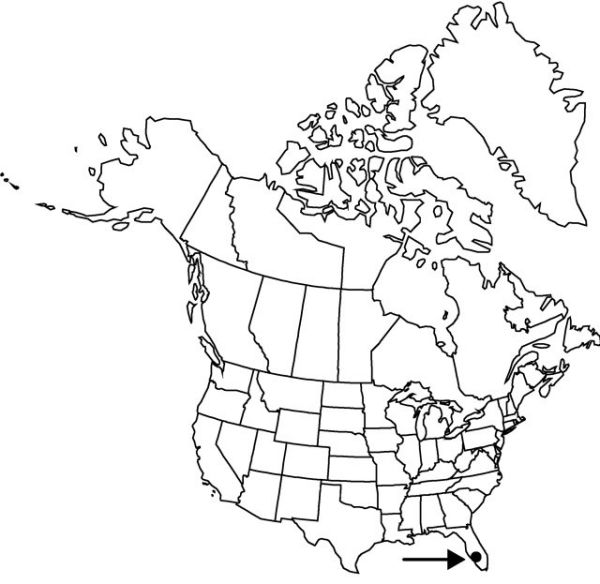Hymenocallis puntagordensis
Pl. Life 18: 71. 1962.
Bulb nonrhizomatous, narrowly ovoid, 5–8 × 2–4.5 cm; basal plate 1–2 cm; neck (5–) 8–12 cm; tunic dark brown. Leaves evergreen, 5–8, suberect, 3.5–7.5 dm × 1.5–3 cm, highly coriaceous; blade shiny green, narrowly liguliform, channeled proximally, apex acute. Scape 5–6 dm, distinctly 2-edged, glaucous; scape bracts 2, enclosing buds, 4–6 × ca. 1.5 cm; subtending floral bracts 3–5 cm × 5–10 mm. Flowers 3–5, opening sequentially, fragrant; perianth tube green, (6–)7.5–12 cm; tepals ascending, green on keel, (7–)9.5–11.5 cm × 4–6 mm; corona white with small, yellowish green eye, funnelform, 2–2.8 × 2–3 cm, margins between free portions of filaments with 1 or 2 prominent lacerate projections; free portions of filaments inserted on flat base, slightly curved, green in distal 1/2, fading to white proximally, (2.5–)3.5–4.5 cm; anthers 1.3–2 cm, pollen yellow; ovary pyriform, 1.5–2.4 cm × ca. 10 mm, ovules 5–9 per locule; style green in distal 1/2, fading to white proximally, 13–22 cm. Capsules unknown. Seeds unknown. 2n = 46.
Phenology: Flowering late summer.
Habitat: Roadsides and margins of disturbed pine flatwoods
Elevation: 0 m
Discussion
Of conservation concern.
Hymenocallis puntagordensis is one of the most poorly known spider-lilies (G. L. Smith et al. 1994; G. L. Smith and M. A. Garland 1996). Apparently it occurs only in the vicinity of Punta Gorda. It was known only from the type collection until collections were made in 1993 (G. L. Smith & M. A. Garland 1625) and 1995 (G. L. Smith & M. A. Garland 1664–1668).
This species has been designated in the horticultural trade as narrow-leaved Hymenocallis latifolia, but it is easily distinguished from H. latifolia by its highly coriaceous, suberect, narrowly liguliform leaves and its small staminal corona with prominently lacerate margin.
Selected References
None.
